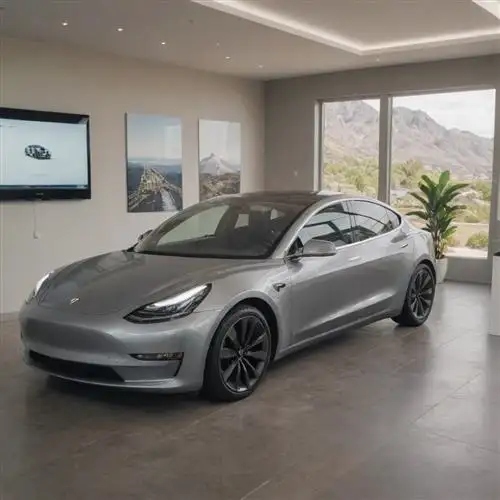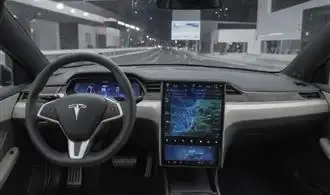
Autopilot Capabilities and Limitations
Tesla's Autopilot system is a powerful driver assistance feature that can greatly enhance the driving experience. However, it's important to understand its capabilities and limitations to ensure safe and responsible use. The Autopilot system is designed to assist the driver, not replace them entirely, and requires the driver to remain alert and ready to take control at all times.
Autopilot's key capabilities include adaptive cruise control, lane centering, and automatic lane changes. These features can help reduce driver fatigue and improve overall safety on the road. The system uses a combination of cameras, ultrasonic sensors, and GPS data to monitor the vehicle's surroundings and make real-time adjustments.
One of the most impressive aspects of Autopilot is its ability to navigate complex driving scenarios, such as merging onto highways, negotiating curves, and responding to traffic signals and signs. The system can also detect and react to potential hazards, such as pedestrians, cyclists, and other vehicles, and take appropriate action to avoid collisions.
However, it's crucial to understand that Autopilot is not a fully autonomous driving system. The system has limitations and can't replace the driver's responsibility to maintain situational awareness and be ready to take control at all times. Autopilot may not always accurately detect or respond to all potential hazards, and it's important for drivers to remain vigilant and be prepared to take over in unexpected situations.
Some key limitations of Autopilot include:
- Inability to reliably detect all objects or hazards in the driving environment
- Potential for system failures or malfunctions that could result in unexpected behavior
- Inability to navigate certain complex driving situations, such as construction zones or severe weather conditions
- Requirement for the driver to remain attentive and ready to take control at all times
To ensure the safe and responsible use of Autopilot, Tesla recommends that drivers keep their hands on the steering wheel and be prepared to take control of the vehicle at all times. The company also emphasizes the importance of closely monitoring the system's performance and being aware of its limitations.
Battery Range and Charging Considerations
When it comes to the Tesla Model 3, understanding battery range and charging considerations is crucial. The EPA-estimated range for the base Model 3 is 263 miles, but real-world usage can vary significantly depending on driving conditions, climate, and individual driving habits. It's essential to understand that factors like high speeds, aggressive acceleration, and extreme temperatures can all impact the car's actual range.
One of the most important things to know is the difference between "miles per kWh" and "miles of range." The former refers to the car's efficiency, while the latter represents the total distance the car can travel on a single charge. It's not uncommon for owners to see a drop in their miles per kWh during colder months, which can result in a lower overall range.
Charging the Tesla Model 3 is a unique experience, and it's important to plan accordingly. The car can be charged using a standard 120V household outlet, a 240V Level 2 charger, or a Tesla Supercharger station. The time it takes to charge the battery can vary significantly, with Superchargers being the fastest option, capable of adding up to 175 miles of range in just 15 minutes.
When it comes to home charging, a Level 2 charger is highly recommended, as it can significantly reduce the time it takes to fully charge the battery. These chargers can add up to 30 miles of range per hour, making them a much more efficient option than a standard household outlet.
One important consideration is the impact of charging on the battery's lifespan. Tesla recommends limiting the use of Superchargers and keeping the battery charge between 20% and 80% whenever possible to prolong the battery's longevity. I Charged My Tesla Model 3 This Way and It Changed Everything explores this topic in more depth.
Customizing the Driving Experience
The Tesla Model 3 offers a highly customizable driving experience, allowing owners to tailor the car to their personal preferences. One of the key features is the ability to adjust the regenerative braking. This feature recovers energy when you lift off the accelerator, slowing the car down without applying the physical brakes. Owners can choose between standard and low regenerative braking, depending on their driving style and preference. The standard setting provides a more aggressive regenerative braking, while the low setting offers a more gradual deceleration, similar to a traditional gas-powered vehicle.
Another important aspect of customizing the driving experience is the acceleration mode. The Model 3 comes with three different acceleration modes: Chill, Standard, and Sport. Chill mode provides a more gradual and smooth acceleration, which can be beneficial for city driving or when carrying passengers. Standard mode offers a balanced and responsive acceleration, while Sport mode unleashes the full power of the electric motors, delivering lightning-fast acceleration that can leave other vehicles in the dust.
The steering feel can also be customized to suit individual preferences. The Model 3 allows owners to adjust the steering weight, making it feel lighter or heavier depending on their driving style. This can be particularly useful for highway driving, where a heavier steering feel can provide more stability and control, or for maneuvering in tighter spaces, where a lighter steering feel can make the car feel more agile.
One unique feature of the Tesla Model 3 is the ability to adjust the driving visualization. The car's central display provides a real-time view of the surrounding environment, including other vehicles, pedestrians, and road markings. Owners can choose to display this information in different ways, such as focusing on the immediate surroundings or expanding the field of view to see more of the road ahead.
Maintenance and Servicing Requirements
Owning a Tesla Model 3 comes with its own unique set of maintenance and servicing requirements. Unlike traditional gasoline-powered vehicles, the Model 3 requires a different approach to upkeep and care. One of the key advantages of the Model 3 is its relatively low maintenance needs, but it's still essential to stay on top of the necessary service and inspections to ensure your vehicle runs smoothly and efficiently.
The first thing to understand about maintaining a Tesla Model 3 is that it doesn't require the same level of regular service as a conventional car. There's no need for oil changes, tune-ups, or other routine maintenance tasks that are common with internal combustion engines. Instead, the Model 3's electric powertrain and battery pack require a different set of considerations.
One of the most important aspects of maintaining a Tesla Model 3 is monitoring the battery's health. The battery pack is the heart of the vehicle, and it's crucial to keep it in top condition. Tesla recommends regularly checking the battery's charge level, temperature, and overall performance. This can be done through the vehicle's touchscreen display or the Tesla mobile app. If you notice any significant changes in the battery's performance, it's essential to have it inspected by a Tesla-certified technician.
Another important aspect of maintaining the Model 3 is keeping the tires properly inflated and rotated. The car's regenerative braking system can put additional stress on the tires, so it's recommended to have them checked and rotated more frequently than a traditional gasoline-powered vehicle. Tesla suggests rotating the tires every 6,250 miles (10,000 km) and replacing them when the tread depth reaches 4/32 inch (3 mm) or less.
In addition to the battery and tires, the Model 3 also requires regular inspections of its other components, such as the suspension, brakes, and electrical systems. While these parts may not need as much attention as a conventional car, it's still essential to have them checked by a qualified technician at the recommended intervals.
One important thing to note is that Tesla has its own network of service centers and authorized repair shops. While you can take your Model 3 to any qualified mechanic, it's often recommended to use Tesla-approved service providers to ensure that the work is done correctly and with the appropriate parts and tools. This can help to maintain the vehicle's warranty and ensure that any software updates or recalls are properly addressed.
Integrating with Smart Home Features
As an early Tesla Model 3 owner, one aspect I wish I had known more about was the car's seamless integration with smart home features. The Tesla Model 3 is more than just a high-performance electric vehicle; it's a technological marvel that can seamlessly sync with your connected home, allowing you to control various aspects of your living space right from the car's touchscreen display.
One of the most convenient features is the ability to control your home's climate settings. You can preset the temperature and fan speed in your home before you even arrive, ensuring a comfortable environment. This is particularly useful during extreme weather conditions, allowing you to preheat or precool your home while you're still on the road.
The Tesla Model 3 also integrates with popular smart home platforms, such as Amazon Alexa and Google Assistant. This integration allows you to voice control various aspects of your home, from turning on lights and adjusting the thermostat to locking doors and arming your security system. The hands-free convenience of this feature is a game-changer, as you can manage your home without needing to pull out your phone or fumble with physical switches.
Another impressive integration is the ability to view your home's security camera feed directly on the Tesla's touchscreen. This means you can check in on your home while you're away, providing an added layer of security and peace of mind. Additionally, you can use the car's GPS location to trigger smart home automation, such as turning on the porch light when you're a few minutes away from home.
One aspect to consider is the need to ensure your home's smart devices are compatible with the Tesla's integration features. While the car supports a wide range of popular platforms, it's essential to research and ensure your specific smart home setup will work seamlessly with the Tesla Model 3. This may require some upfront planning and investment in compatible devices, but the convenience and integration it provides can be truly transformative.
















